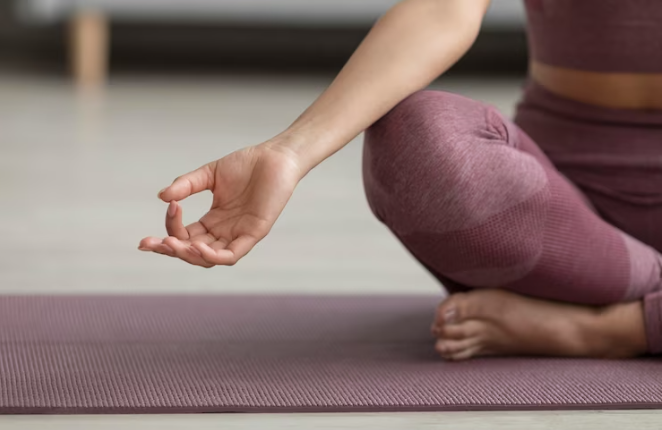Do you find yourself looking for ways to deepen your spiritual practice and connect with your body at the same time? If so, you may find that yoga is the perfect tool for you.
Yoga is an ancient practice that has been around for thousands of years, and it has been used as a way to connect the mind and body for just as long. In this article, we will explore the history and philosophy of yoga, the mind-body connection, and the benefits of yoga for mental health. We will also discuss poses and movements that can help you grow spiritually and how to incorporate yoga into your spiritual practice.
Yoga is more than just a physical exercise, it is a holistic practice that encompasses the mind, body, and spirit. The practice of yoga is rooted in the belief that the mind and body are interconnected and that by working with the body, we can access and transform the mind.
Through the practice of yoga, we can learn to quiet the mind and connect with our inner selves, ultimately leading us to a greater sense of peace, happiness, and spiritual growth. Whether you are new to yoga or a seasoned practitioner, this article will provide you with insights into how yoga can deepen your spiritual practice and enhance your overall well-being.

The History and Philosophy of Yoga
Exploring the history and philosophy of this ancient practice unveils the profound wisdom and cultural significance that underlies the modern interpretation of yoga.
Yoga has its roots in ancient India, dating back over 5,000 years ago. The word ‘yoga’ comes from the Sanskrit word ‘yuj,’ meaning to yoke, or to unite.
Yoga was initially developed as a spiritual practice to help individuals achieve a state of inner peace and harmony. Over time, it evolved into a physical practice that promotes physical health, mental clarity, and emotional well-being.
Today, there are many different schools and styles of yoga, each with its own unique approach and focus. Hatha yoga is the most widely practiced style in the West and is characterized by its emphasis on physical postures and breath control.
Other popular styles include Ashtanga yoga, which focuses on a series of flowing movements, and Kundalini yoga, which emphasizes the awakening of energy within the body. Regardless of the style, the underlying philosophy of yoga remains the same: to achieve a state of unity between the mind, body, and spirit.
The practice of yoga is a powerful tool for connecting with oneself and the world around us, and it continues to evolve and grow in popularity as more people seek to find balance and meaning in their lives.
Understanding the Mind-Body Connection
Did you know that people who regularly engage in physical activity experience a 35% reduction in symptoms of depression and anxiety? This highlights the important connection between our physical and mental well-being.
Yoga, in particular, emphasizes this connection through the practice of asanas or physical postures, which are designed to increase physical awareness and promote mental wellness. The mind-body connection in yoga is based on the idea that the body and mind are interdependent.
By practicing yoga, you can learn to listen to your body, become more aware of your thoughts and emotions, and develop a greater sense of inner peace and calm. As you move through the asanas, you learn to focus your mind on your breath and your body, which can help to reduce stress and anxiety and promote a sense of relaxation and well-being.
By bringing your attention to the present moment and connecting with your body, you can cultivate a deeper sense of self-awareness and foster a more positive relationship with yourself and others.
The Benefits of Yoga for Mental Health
You can improve your mental health and emotional wellbeing by practicing yoga regularly. Yoga is not just a physical exercise, but it also helps to reduce stress, anxiety, and depression.
Yoga poses, breathing techniques, and meditation can help you to calm your mind, reduce negative thoughts and emotions, and increase your overall sense of well-being. Studies have shown that yoga can also increase the levels of GABA (gamma-aminobutyric acid) in the brain, which is a neurotransmitter that helps to regulate mood and anxiety.
Additionally, yoga can increase the production of serotonin and dopamine, which are neurotransmitters that are associated with feelings of happiness and well-being. By practicing yoga, you can improve your mental health and emotional wellbeing, and feel more positive and relaxed in your daily life.
Poses and Movements for Spiritual Growth
By incorporating specific poses and movements into your practice, you can deepen your sense of inner peace and unlock a greater understanding of yourself and the world around you.
Breathwork and meditation are key components of spiritual growth through yoga. Focusing on your breath helps to calm the mind and connect you with the present moment, while meditation allows you to observe your thoughts without judgment and gain clarity on your innermost desires and intentions.
Chakra balancing is another powerful tool for spiritual growth in yoga. The seven chakras are energy centers located throughout the body, and each one represents a different aspect of your being. By practicing poses that target specific chakras, you can release blockages and cultivate a sense of balance and harmony within yourself.
As you deepen your practice, you may find that your yoga journey becomes less about the physical postures and more about the inner journey towards self-discovery and enlightenment.
Incorporating Yoga into Your Spiritual Practice
Incorporating yoga into your spiritual practice can be a transformative experience that helps you discover new ways to connect with your inner self and cultivate a deeper sense of peace and harmony in your life. By combining yoga and meditation, you can create a powerful practice that enables you to quiet your mind, release tension, and foster a sense of calm and clarity.
One way to incorporate yoga into your spiritual practice is by creating a daily yoga routine. This can begin with simple stretches and breathing exercises that help you prepare your mind and body for the day ahead.
As you become more comfortable with these movements, you can gradually incorporate more challenging poses that help you develop strength, flexibility, and balance.
By dedicating time each day to your yoga practice, you can cultivate a deeper connection with yourself and the world around you, and experience the many benefits that come with this transformative practice.
Are you struggling to make your essays flow smoothly from one idea to the next? https://ivorymagazine.com/effective-transition-words-and-phrases-in-essays/
Conclusion
Congratulations! You’ve learned about the history and philosophy of yoga, as well as its many benefits for mental health and spiritual growth.
By understanding the mind-body connection, you can use yoga as a tool to enhance your spiritual practice and deepen your connection with yourself and the world around you.
Remember, Rome wasn’t built in a day, and neither is a spiritual practice. Just like with yoga, it takes time, patience, and dedication to see the benefits. So, don’t be discouraged if you don’t immediately feel enlightened or connected after your first yoga session. Keep practicing, and you’ll soon see the benefits of the mind-body connection.
As the saying goes, ‘life is a journey, not a destination.’ Embrace the journey of yoga and spirituality, and allow yourself to grow and evolve along the way.

